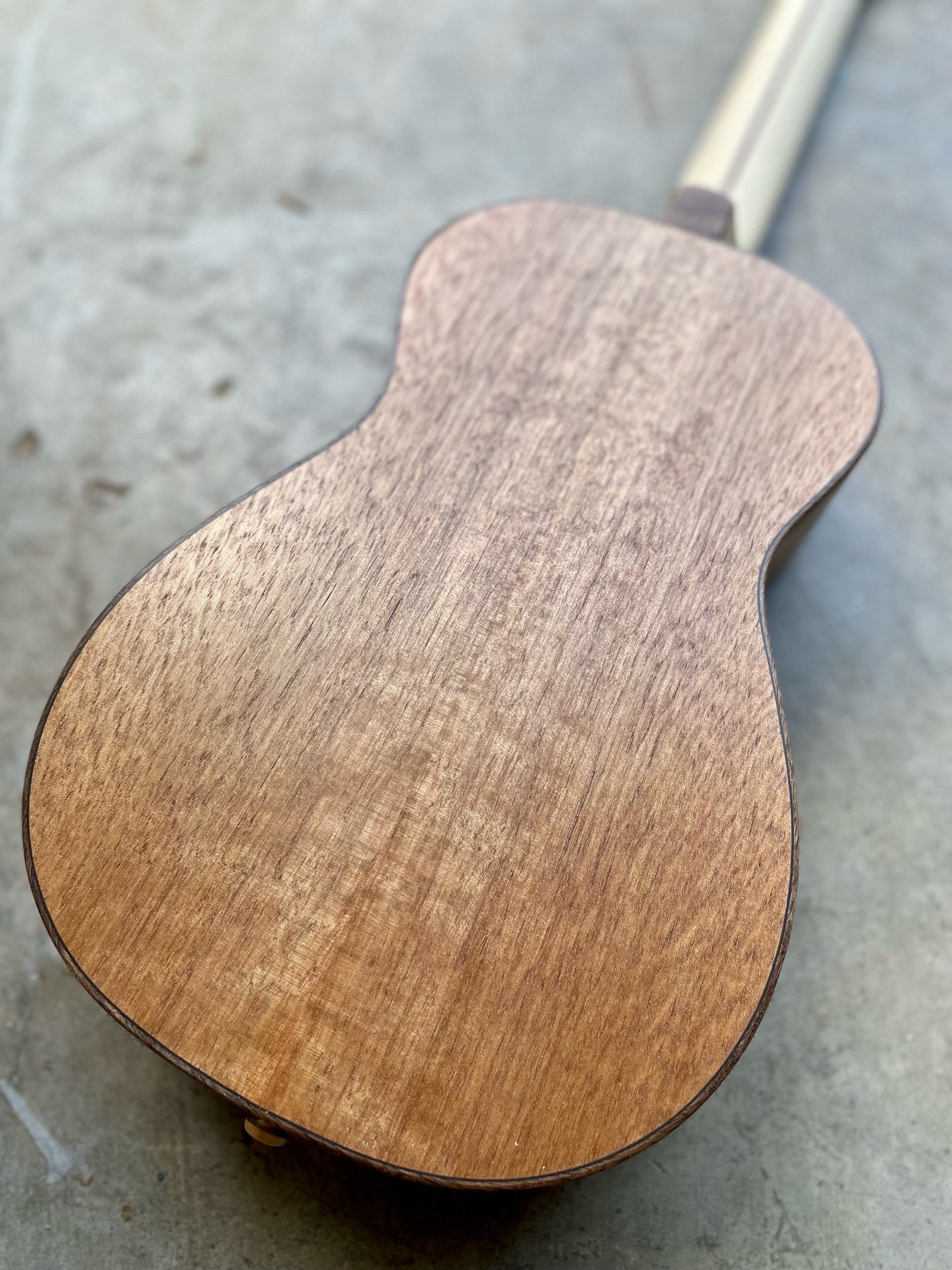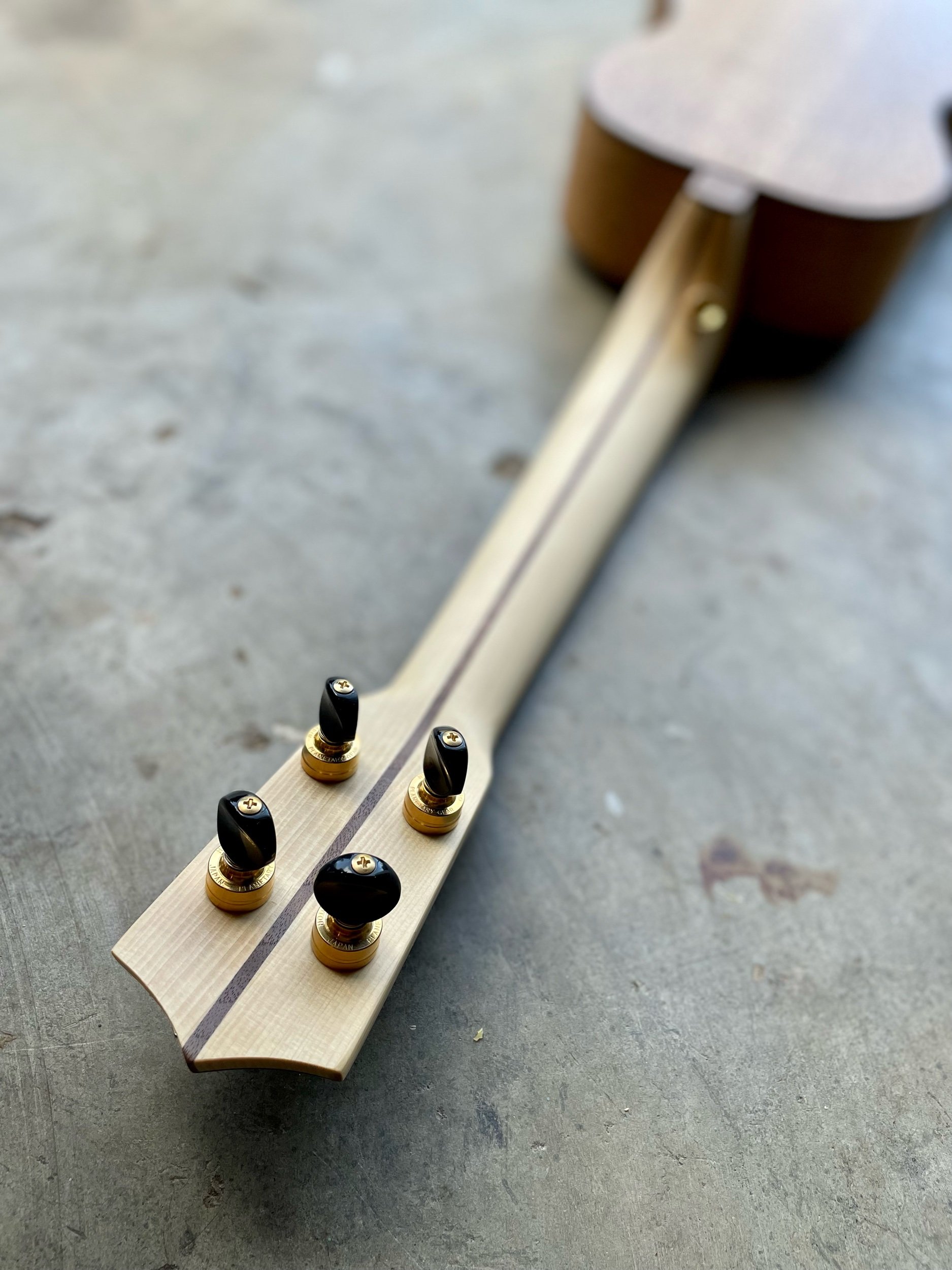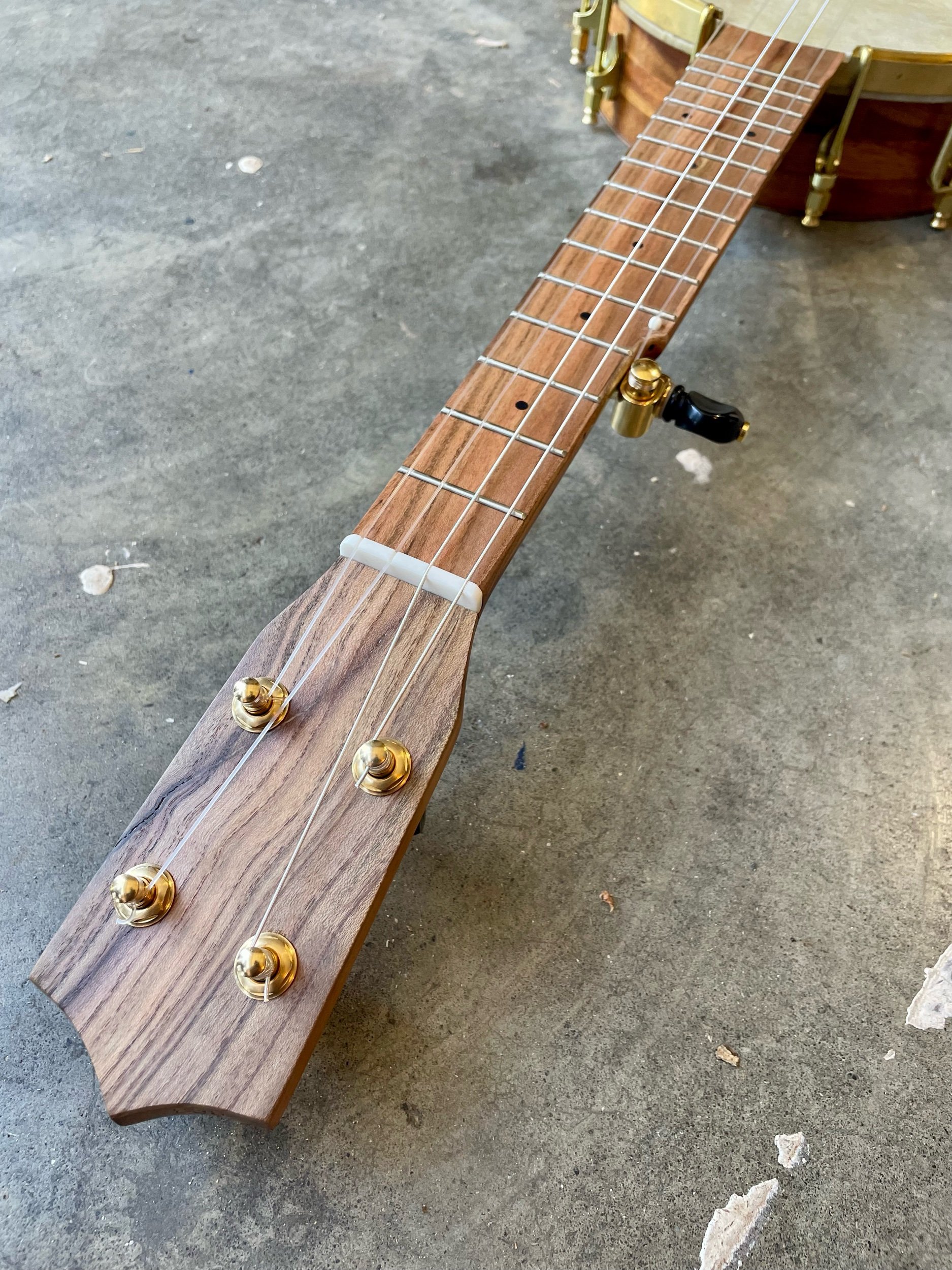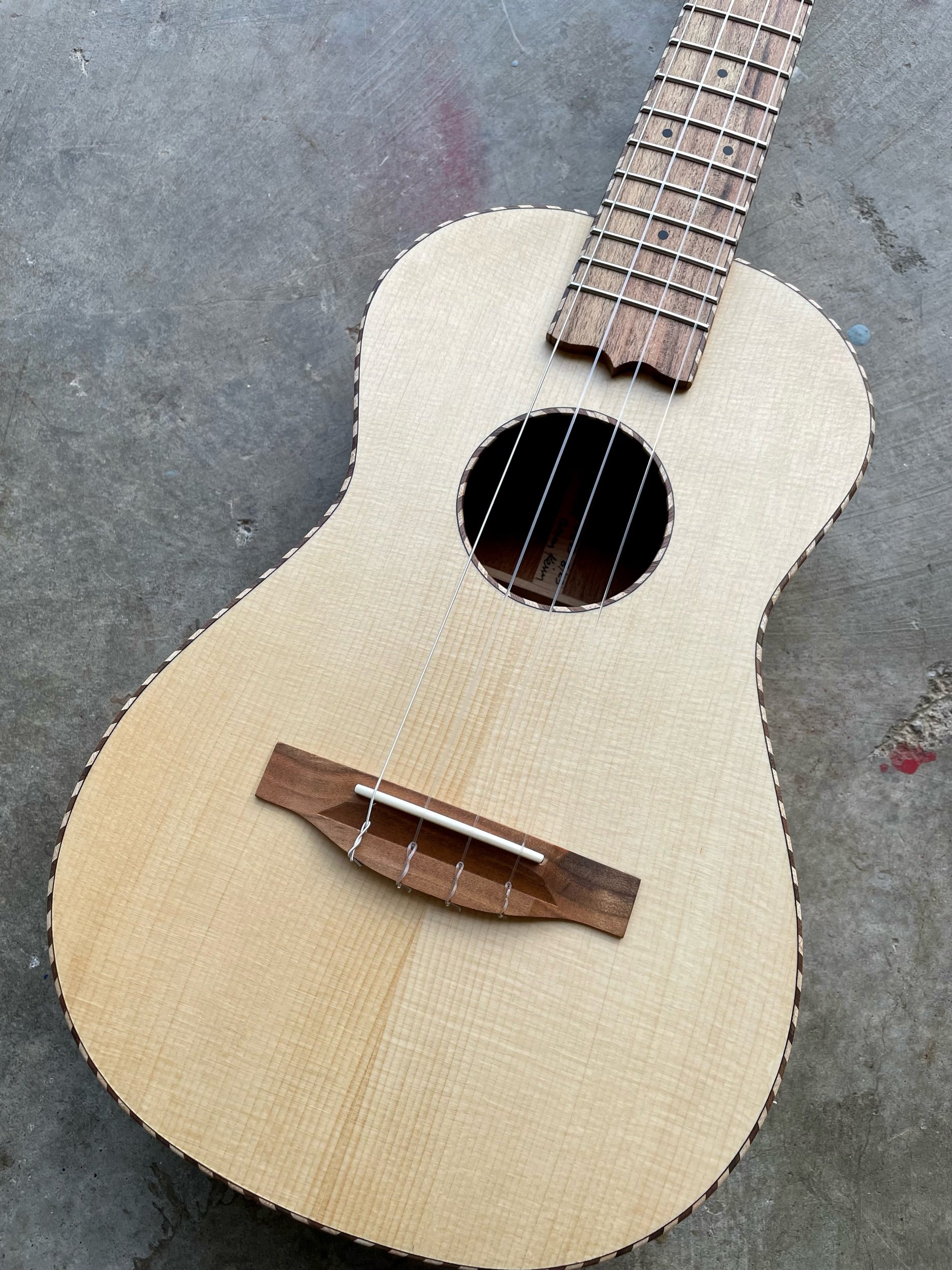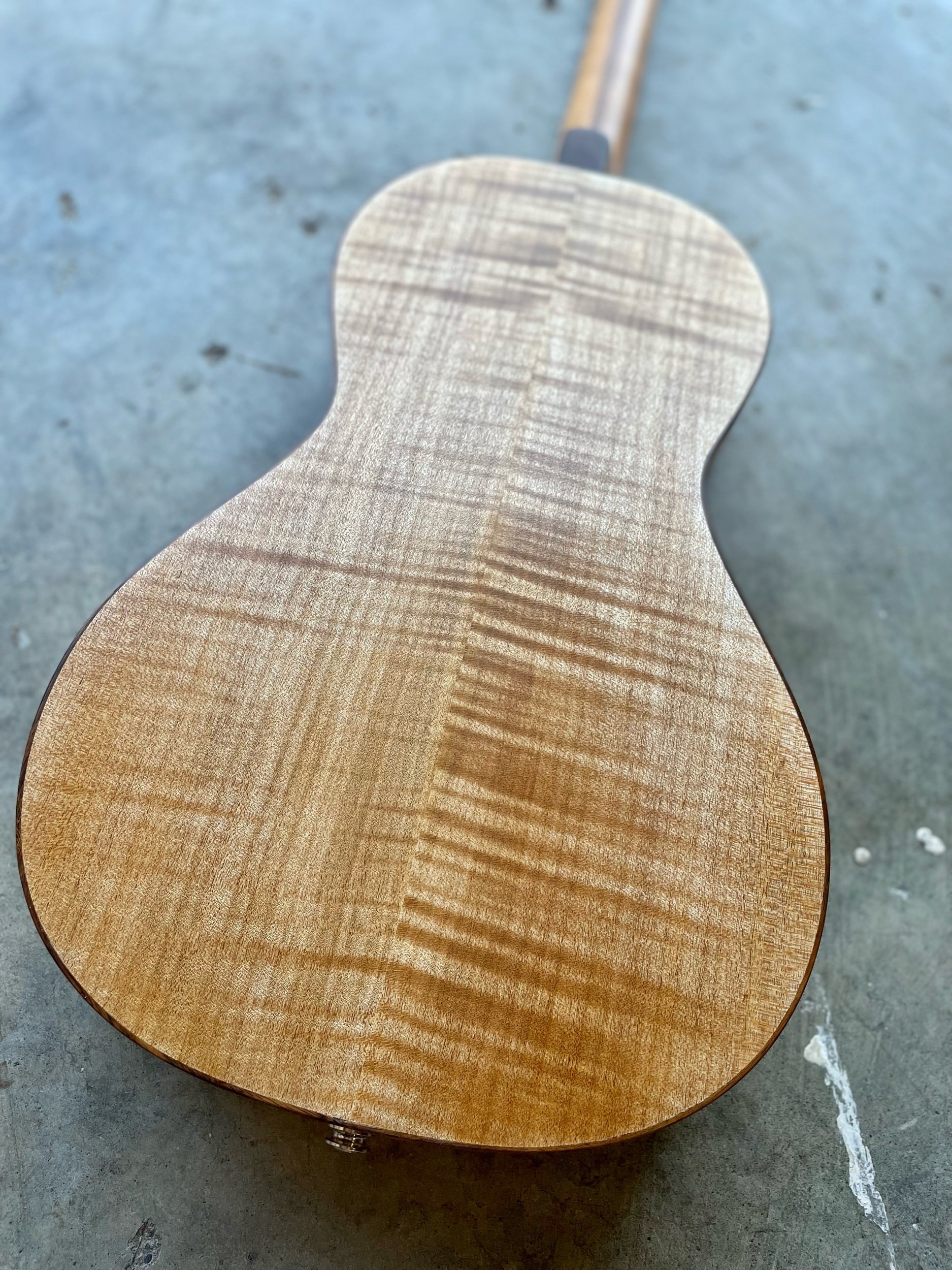I work hard to limit the number of woods that I use. This helps with the consistency and identity of my work, but also helps with the labor of checking for sustainability and yield. But, there are still some ukes that contain a combination that surprises me. In this case, the Juniper is from Western Oregon and came from Chris at The Dee Mill. It is sort of between Cedar and Spruce in hardness and tone. The Chinquapin is a west coast wood that behaves like a mix of Oak and Mahogany. Put all that together for a bright but earthy sound, with some grit below the sweetness. I like it. The neck is some Port Orford Cedar and the rest is local Walnut. I am really proud of this one and can’t wait to pass it on.
“This uke speaks to me on all levels. Bright yet warm. It’s very inviting. What a joy Aaron. You really are able to “feel” the woods and bring them together. Such beautiful music.
- J.H. ”




